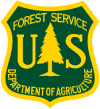Humane Wildlife Control in Tulsa, OK
The Humane Wildlife Control Society recommends non-invasive solutions to resolve human-wildlife conflicts. This includes:
Determining if the issue needs to be addressed at all
Opting for preventative measures first
Opting for wildlife exclusion as opposed to trapping
If trapping is the only way to solve the problem do so humanely
The Humane Wildlife Control Society screens candidates prior to recommendation. Our process requires any company we recommend to meet the following criteria:
Is properly licensed in Oklahoma for wildlife control
Carries appropriate business licenses and insurance
Complies with all Oklahoma laws and regulations for wildlife control
Adheres to the humane principles listed above.
In Tulsa, Oklahoma we recommend Humane Wildlife Removal Tulsa for professional wildlife control services. This is a private company that charges for their services.
Contact Information:
Pro Wildlife Removal Tulsa
918-900-6170
If you have any wildlife issues that can be handled by the state government agency for free, the Oklahoma Wildlife Commission can help.
State Contact Information: (405) 521-3851
The State Department of Agriculture may also be able to address your wildlife problem for no charge.
USDA Contact Information: (405) 522-5488
Ethical Animal Deterrence and Removal in Tulsa, Oklahoma: A Guide for Residents I. Understanding Local Wildlife and Potential Conflicts: Tulsa’s urban and suburban areas provide habitats for diverse wildlife, including raccoons, squirrels, opossums, rodents, skunks, birds, and coyotes. Prevention: The First Line of Defense: Live Trapping (with Restrictions): Oklahoma Department of Wildlife Conservation (ODWC) Regulations: All wildlife management activities must comply with ODWC regulations. Adhere to all ODWC regulations and local ordinances. Oklahoma Department of Wildlife Conservation (ODWC) website: For regulations, permits, and wildlife information. The City of Tulsa is committed to promoting ethical and responsible wildlife management practices that prioritize public safety and animal welfare. Residents are encouraged to adopt these humane deterrence and removal techniques and work with licensed professionals when necessary. By working together, we can ensure a safe and harmonious coexistence with the wildlife that shares our city.
The City of Tulsa recognizes the importance of responsible wildlife management, prioritizing the safety of our residents and the humane treatment of animals. This guide outlines ethical animal deterrence and removal practices, ensuring compliance with Oklahoma Department of Wildlife Conservation (ODWC) regulations.
Conflicts arise when animals seek food, shelter, or territory within residential and commercial properties.
Understanding animal behavior is crucial for effective and humane mitigation.
II. Ethical Deterrence Strategies:
Secure Food Sources:
Use animal-resistant garbage cans with secure lids.
Store pet food indoors and avoid leaving it outside overnight.
Clean up fallen fruit, birdseed, and other potential food sources promptly.
Maintain compost piles in a way that prevents animal access.
Eliminate Shelter and Access:
Seal cracks and openings in foundations, walls, and roofs.
Install chimney caps and screen vents.
Trim trees and shrubs away from buildings.
Clear brush piles and debris that provide shelter.
Landscape Management:
Maintain a clean and well-kept yard.
Consider fencing to deter larger animals.
Avoid planting vegetation that attracts nuisance wildlife.
Avoid Feeding Wildlife:
Do not intentionally feed wildlife, as this leads to habituation and increased conflicts.
Humane Deterrents:
Sensory Deterrents:
Use motion-activated sprinklers or lights to startle and discourage animals.
Employ humane repellents designed for specific species, following product instructions.
Utilize noise deterrents, such as ultrasonic devices, with caution.
Use visual deterrents, such as reflective tape or scarecrows, and rotate them frequently.
Exclusion:
Seal entry points after ensuring the animal is no longer inside.
Use one-way doors to allow animals to exit structures but prevent re-entry.
Consult a licensed wildlife professional for complex exclusion projects.
III. Ethical Animal Removal Practices:
Live trapping should be considered only as a last resort.
Traps must be checked frequently to minimize stress on captured animals.
Relocation must comply with ODWC regulations and be conducted responsibly.
Relocation is not always the best option for the animal, and may cause harm.
Working with Licensed Wildlife Control Professionals:
For complex or persistent wildlife problems, it is strongly recommended to consult with a licensed wildlife control professional.
These professionals have the expertise and equipment to safely and humanely remove wildlife.
They are also knowledgeable about applicable regulations.
Avoid Harmful Methods:
Do not use poisons or glue traps, as they cause prolonged suffering.
Avoid indiscriminate killing or harming of wildlife.
IV. Legal Considerations and Reporting:
Protected Species: Certain species are protected and require specific permits for removal or relocation.
Reporting:
Report any instances of animal cruelty or illegal wildlife activity to the appropriate authorities.
Contact the ODWC for regulations, permits, and guidance.
Contact Tulsa Animal Welfare for domestic animal issues or aggressive wildlife posing immediate danger.
V. Resident Responsibilities:
Prioritize humane methods that minimize animal suffering.
Educate yourself on local wildlife and preventative measures.
VI. Key Resources:
Tulsa Animal Welfare website: For local ordinances and animal control information.
List of licensed wildlife control professionals: Available through ODWC.
VII. City of Tulsa’s Commitment:







